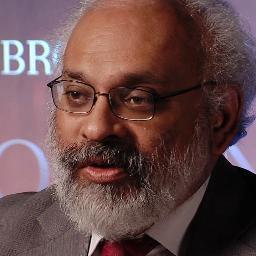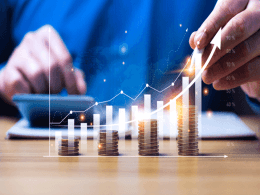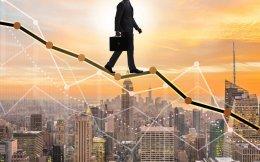Subir Gokarn, director of research at the Indian arm of global think tank Brookings Institution and former deputy governor of RBI, says he is still not in a position to reconcile the dissonance between GDP and IIP data as the new numbers leave a question as to what stage of the business cycle the economy is operating in. In an exclusive chat with VCCircle, he points out that the key barrier to the Indian economy is infrastructure constraints. However, India is better placed among BRICS nations given that it is a commodity importer and there is hope that government will push ahead with its reforms agenda, he says. Edited excerpts:
How do you reconcile the dissonance between headline growth numbers and high frequency indicators? What policy implications does it have?
We are still not in a position to reconcile these two patterns; while the new numbers have told us that the economy is growing at a rate faster than we believed earlier, we don't yet have a time profile of data which allows us to gauge what stage of the business cycle the economy is operating in under the new numbers. Under the old numbers, we were clear the economy was slumping till perhaps last year; then it bottomed out for a while and then started to pick up again. The new numbers tell us what happened in the last three years and that there has been acceleration but we cannot put this in the context of any historical pattern which could tell us where we are in the business cycle. So I am not in a position to make a comparison. I have no doubt that the methodology used for the new numbers was genuinely intended as a improvement using a larger array of numbers representing a bigger part of the economy but I don't have a comparative framework. I would like to know under the new series what the economy was doing between 2003 and 2008 when we know under the old series there was high growth. If we have that information, then we can say if the economy is in a cyclical downturn or not. But until we have that information, this is a futile debate.
A year ago, India was the toast of the town among the emerging markets pack. People drew parallels to an elephant adding wings to take off. Obviously an elephant cannot fly. Is what we are seeing now a reflection of over-optimism about how the government can transform the economy and the country?
Markets tend to be a little bit ahead of real economy; even in situations where you have serious recessionary tendencies, markets have typically recovered six-nine months ahead of real indicators. So one would see this optimism as a precursor to a recovery in the real economy. We also have to be cognizant to the barriers that there are to not only recovery but also to sustainability of economic growth. To me, the key barrier in the Indian context is infrastructure. Markets can make whatever assessment they want but you should look at what is preventing businesses, entrepreneurs and farmers from expanding output which is what you need for growth. Infrastructure poses a serious constraint on this capacity; so we can see some growth but I don't see a take-off unless we provide some really substantial solution to the infrastructure problem.
The failure of the government to build political consensus in Rajya Sabha to pass crucial bills is similar to how policymaking in the US is stuck over partisan politics. Do you think investors and analysts did not fairly factor in NDA's minority seats in the Upper House and how it can stall the big moves?
A good analyst would never have discounted this prospect. A good analyst would have taken into account the risks of the government not being able to build a majority in Rajya Sabha. So saying that they didn't account for this is akin to saying they weren't good analysts which is a generalisation. There are two issues—one is that the government itself is backtracking. BJP did support the land acquisition bill in the previous Parliament; having supported it then, now it has to make a much stronger case as to why is it looking to change so quickly. It has to provide assurances as to how those changes will not hurt specific interests; they may help some interests which is what the opposition is accusing them of but there is not a strong enough counter argument to support the idea that it will help the interest of people who the opposition claims it is hurting. If the government’s argument is there are some consequences and we are doing everything to mitigate those, then it has a better chance of seeing the bill through. That has to be the strategy to look at the various arguments of the Opposition.
Though global crude prices are still much below the level a year-ago, retail fuel prices have risen back to the same level and the cushion of low fuel prices and its impact on inflation has waned. Any further uptick in global oil prices and disturbance in weather could pull up inflation. How significant is the risk of inflation bouncing back with crude prices hardening, a deficient monsoon and US a rate rise?
If El Nino happens and monsoon fails disastrously, it will obviously cause a lot of distress. For El Nino, the baseline is 93 per cent of normal. Now 93 per cent is not a crisis situation—severity would depend on regional and temporal distribution. If monsoon is relatively week in some parts—that is, west coast or north—impact on food production and prices is limited. The real vulnerability is the central region which is completely dependent on rainfall. But 93 is not a panic situation. Instead of anticipating the crisis, we have to see how it plays out.
If the Fed were to raise rates in 2013, they didn't eventually do it but even the anticipation or fear caused so much disruption. Today they have rolled back liquidity and it had no impact at all. The key difference between then and now is the size of current account deficit (CAD). If our CAD is around 2 per cent of GDP, I don't think we have to worry about what the Fed does. If it goes up to 4 per cent, then we have a serious problem as a small shock can magnify into a full-blown currency crisis. Having got CAD down, we are relatively safe on that front.
We have seen oil prices going back up from troughs but shale is a substitute—we are seeing significant shale and tar production in North America. The economics of shale suggest $65 will keep it viable—much of the shale reserves are extractable profitably at $65; so it does impose a cap. So even if we see the prices going up again, I don't see them going up very sharply beyond this level in the short term.
What is your view on the RBI's monetary policy strategy? While there is a clamour for a rate cut, the spectre of inflation rising poses a problem for RBI...
RBI's judgment is based on its assessments of inflation risks. For example, if it believes that inflation has stabilised with risks of
an upsurge that will be low, then it clearly has enough headroom to cut rates. What sort of benchmark should we be using? The governor has mentioned somewhere around a 1-1.5 per cent real interest rate—it is a reasonable stance with inflation at 5 or so. At 5, repo rate should be at 6.5 that will give headroom if RBI believes inflation is going to remain stable. So it is not really a question of certainties but a question of what the assessment of inflation risks are.
The recent trend in the stock market has thrown two views. One is that it is a dead cat bounce and the other is that it has bottomed out after a healthy correction. Looking at macro fundamentals and the near term outlook on the economy, which view would you support?
If inflation remains at the current levels somewhere down the line interest rates are going to come down and it is going to stimulate consumer spending, particularly consumer durables and construction. This would provide momentum to what is already a mild recovery at this point. On the other hand, the ability to break out the current growth range is completely constrained by infrastructure, I don't see how markets can keep rising without some assurance on those bottleneck being dealt with. (Markets are) looking for credible concrete fast moves on easing infrastructure constraints in whatever way across the board. Solutions are not going to come overnight but whatever moves you see should support the market optimism—if that movement is not there then the optimism would start getting tempered. It is a balanced situation right now—there are some prospects for acceleration but there are also constraints that need to be taken into account.
Another view is that India is still best placed among the BRICS pack. Is that thinking justified?
Russia, Brazil and South Africa are commodity dependent and are significantly impacted by commodity prices. Both Brazil and South Africa are big commodity exporters. Commodities by and large have softened—you can see that their prospects are not very bright and that is an inevitable consequence of commodity prices. China and India are commodity importers; so low commodity prices have worked in their favour. China is going through a transition which is obviously bringing its growth rate down but I don’t think we should underestimate the steadiness and robustness of China’s economy.
I would certainly say India because it is a commodity importer and there is hope that government will push ahead with its reforms agenda, offers a very good proposition to global investor. Within the BRICS context, there is a sharp divide between commodity exporters and importers.
Coming to the capital account convertibility debate, should India move towards full or partial convertibility?
There is a tendency to see this issue in terms of black or white. To me it is really a trivial point; of course, full convertibility means that there are no restrictions for anybody to take money in or out—that sounds like an ideal situation. There are obvious risks that come with it. The question is whether as a system we have the capacity to bear those risks and if we don't then we should be cautious. Let's just cut the cloth according to the coat and look at our domestic system, financial institutions or a regulatory or risk management framework and say we can take only a certain amount of risk and we should limit ourselves to that. To me, it is not an issue of principle that we should have full or partial convertibility. Convertibility is good—it brings with it a certain number of benefits but beyond your capacity it can make you very fragile. Where we are in terms of priorities relatively, full convertibility on equity investments and FDI and limited convertibility on Indian citizen being able to take money out seems a prudent combination.
Looking at the government's economic agenda over the next year, which are the top three things you would like to see being done?
If we don't get a credible infrastructure strategy in place, growth is not going to come back because our entire spectrum of economic activity is constrained by infrastructure—it is partly sector-specific and part coordination across sectors. So it is not just a question of dealing with roads, railways, power or ports; it is a question of whenever there is an increase in some capacities, other capacities around it also grow proportionately. The problem is infrastructure projects have stalled and that is putting an enormous burden on NPAs and banks; so combination has proven to be negative for the rest of businesses because banks are struggling so much from NPAs from infrastructure they are reluctant to lend to anybody because they cannot take that additional risk. So it is problem of massive consequences on multiple dimensions. So if we don't address infrastructure, a lot of other problems are going to become more severe and we cannot afford to let that happen.





